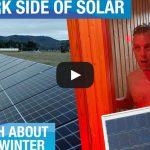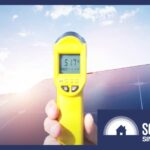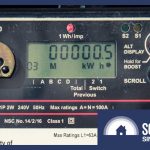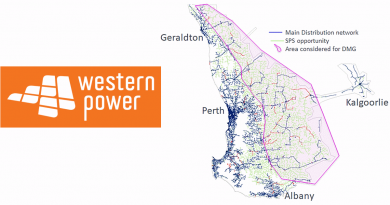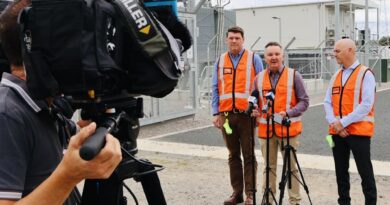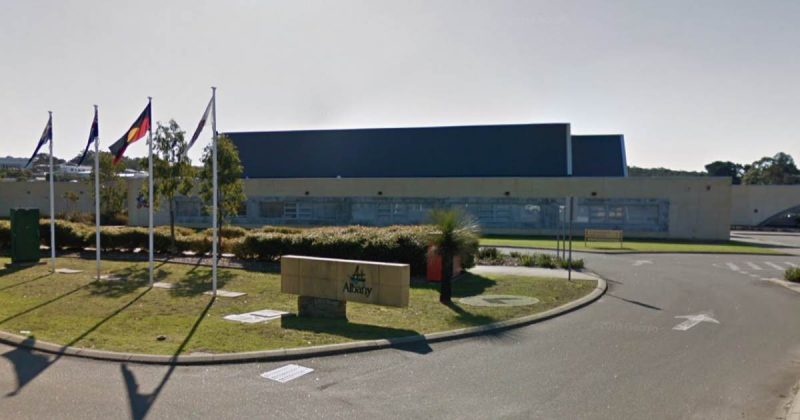How Well Does Solar Work Through Winter?
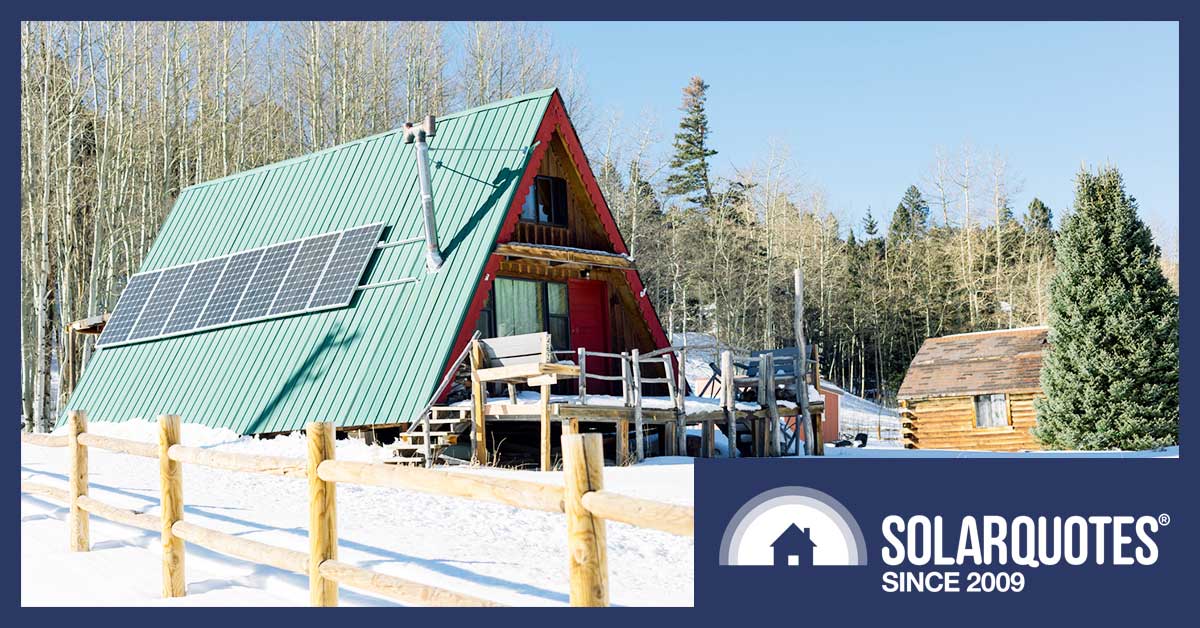

Over the next week or so I’ll write some articles busting solar myths because, if I’ve learned anything from 25 years of internet use, it’s way easier to complain about something than go through the effort of doing something useful. Today I’m tackling solar energy output in winter in Australia.
Internet commenters have told me, right to my internet face, solar power doesn’t work in winter. These statements don’t even come larded with provisos, exceptions, and caveats. They are bald internet faced lies. While my initial reaction is to roll my eyes so hard I can count all four of my brain cells1 and ignore the idiots, if left unopposed, their nonsense can seep into people’s brains.
To prevent idiocy oozing into people’s brain cells, I’ll show…
- Solar does work in winter.
- In some parts of Australia, it works damn well.
- While output can be reduced in winter, it never disappears.
By the time you finish this article, your brain should be idiocy resistant. This is because exposure to my idiocy acts like a vaccine.
Solar Obviously Works In Winter
It’s easy to see solar power works in winter. Here’s the daily output of a 10.56 kilowatt solar system in Adelaide since it was switched on at the start of April:
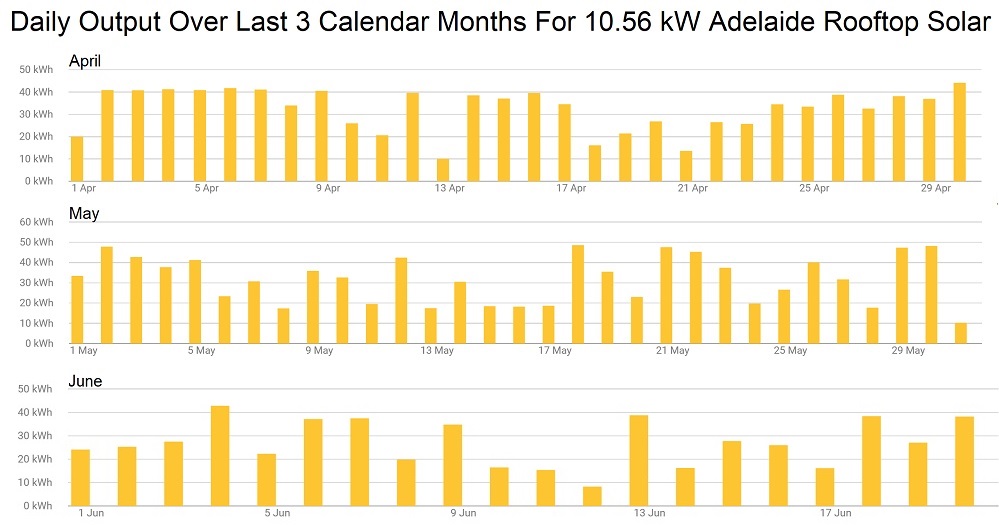

As you can see, while some days were clearly better than others, there were no days when zero solar energy was produced. This includes the winter month of June, the worst month for solar output in most of Australia. The worst day was the 12th of June when only 8.3 kilowatt-hours were generated. This is 19% of the average daily output of this size system in Adelaide. Only 19% isn’t wonderful, but it’s infinitely more than the 0 kilowatt-hours it would provide if “solar doesn’t work in winter” was true.
June: Month Of Least Sun
While July is the coldest month, in most of Australia June is the worst for solar energy output because thanks to the winter solstice. This is the shortest day of the year. Usually, it’s on the 22nd, but this year it’s the 21st.
If you’re considering getting solar power, near the winter solstice is the best time to check if your roof suffers any significant shading from nearby trees or buildings, because shadows will be at their longest. If your roof is free of shade on the winter solstice it will be free of shade all year — unless you have some fast-growing trees or buildings nearby.
In Darwin, Winter Is Best For Solar
Here’s a graph showing the average daily generation of a 6.6 kilowatt north-facing solar power system versus its average daily generation in June for each Australian capital:
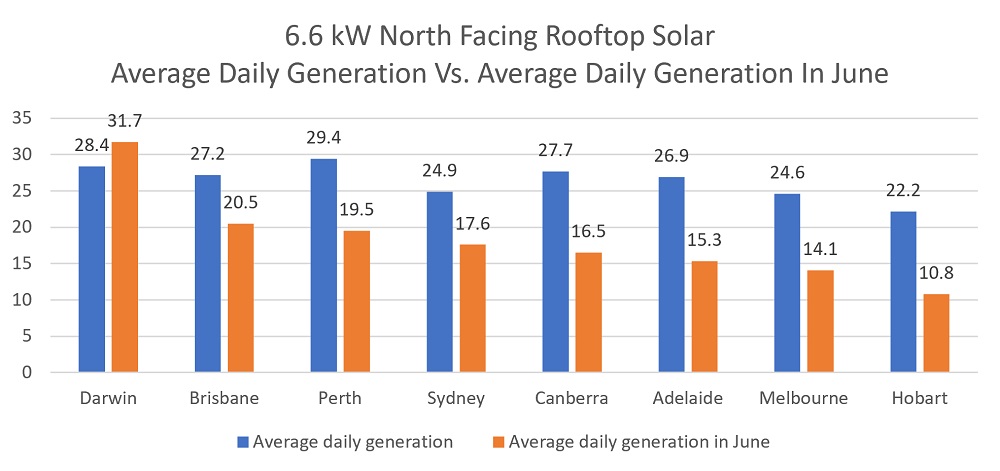

Darwin stands out with higher solar energy output in winter than summer. This is because:
- In the tropics, day length varies less in between summer and winter.
- Summer brings the big wet with cloudy skies and endless rain, while winter brings the big dry and clear skies.
In the rest of the capitals, the figure for June is considerably lower. As a percentage of the annual daily average, the June daily average is:
- Darwin 112%
- Brisbane 75%
- Sydney2 71%
- Perth 66%
- Canberra 60%
- Adelaide 57%
- Melbourne 57%
- Hobart 49%
The percentage falls the further south the city. Hobartians are the worst off in winter with the lowest total generation and the largest relative decline. This is no surprise at all to people who subscribe to certain modern theories about the shape of the world.
[embedded content]
But it’s not all bad for Hobart in winter.
No, wait, it is all bad. If we consider average electricity consumption in winter, it makes the apple capital look even worse.
June Consumption Vs. June Solar
The graph below shows average daily electricity consumption in June for each capital compared to the average daily output in June for a common 6.6 kilowatt north-facing solar system:
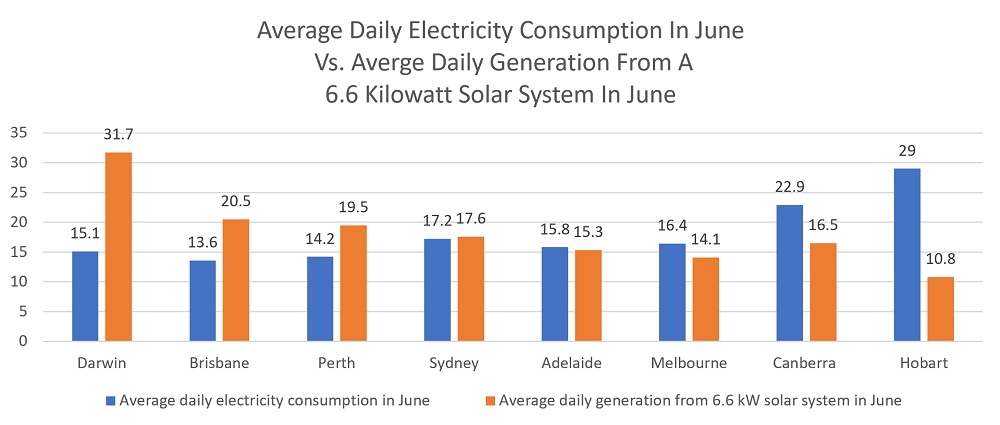

In Darwin, Brisbane, Perth, and Sydney average June solar energy output exceeds average household electricity consumption, but in the other capitals, there is a shortfall. The mainland capital with the largest shortfall is Canberra, thanks to high electricity consumption in their cold winters. But the worst capital by far is Hobart where the average solar output in June for a 6.6 kilowatt solar system only comes to 37% of average household consumption.
The easiest way to improve this is to install a larger solar system — provided there is room on your roof. All else equal, a 10 kilowatt solar system will provide 52% more energy than a 6.6 kilowatt one. If more solar panels aren’t an option, you can look at alternatives such as improving your home’s gaps, glazing and insulation, using an energy-efficient reverse cycle air-conditioner for heating, or violent shivering.
Dark Days Will Come
When a bored sadist on the internet looking for someone to annoy says solar doesn’t work in winter, there is a small corn kernel of truth inside the stinking lie. While solar power definitely does work, there will be days of awful output. Below I’ve made a chart showing the output of a 6.6 kilowatt north-facing solar system on its worst day so far this year. The figures below are only approximate because I came up with them by eyeballing curves — something I’d normally never do3:
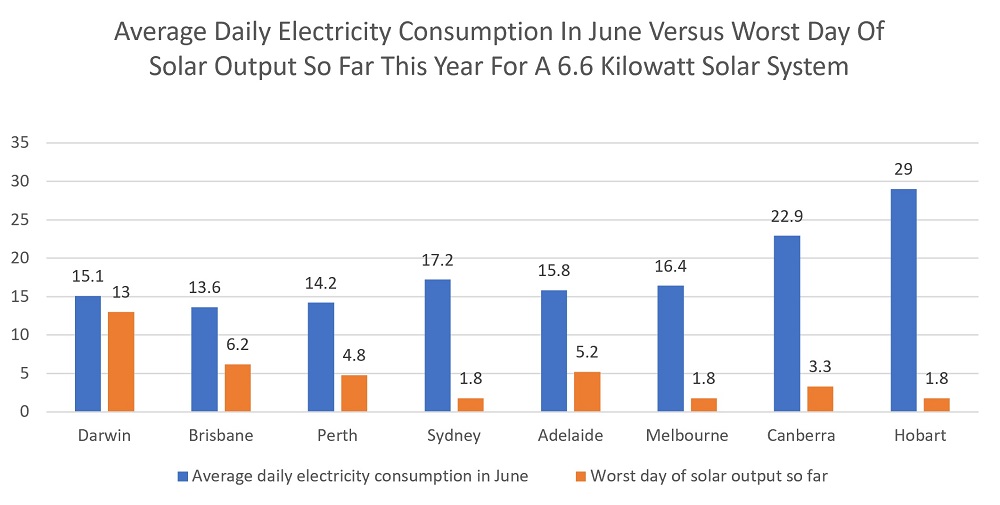

While Darwin, Brisbane, Perth, and Adelaide haven’t had a terrible day so far this year, Canberra has had a day of quite low output and Sydney, Melbourne, and Hobart have all had a horrible, dark day. While a day of low solar output isn’t good, it’s not a disaster if you’re on-grid. Even if you are off-grid the good news is periods of unusually low solar energy output normally don’t last long, as demonstrated by the first graph near the top of this article showing the daily output of a solar system over the past three calendar months.
But if you are off-grid it’s vital to prepare for rare patches of particularly bad weather and/or high electricity consumption.
Coping With Poor Winter Performance
There are four main ways of tackling the problem of poor winter output. If I had to sum each one up with a single word, I would describe them as:
- Move
- Tilt
- Store
- More
- Reduce
But, thank god, I have buckets of words here, so there’s no need for excessive concision.
1. Move North: Moving closer to the equator reduces the angle sunlight hits clouds in winter. This will cause otherwise identical cloud cover to cut solar output less in Brisbane than Melbourne. However, most people don’t consider this a practical approach due to the expense of moving and if you head into the far north you’ll have to fight giant spiders for territory.
2. Increase Panel Tilt: Panels can be tilted to maximize their winter output. This can be an excellent idea for ground-mounted off-grid systems. But because tilt racks on a roof are a major expense, it rarely makes sense for rooftop solar panels. The ideal angles (from horizontal) for maximum winter output from north-facing panels are:
- Darwin: 46 degrees
- Brisbane: 53 degrees
- Perth: 58 degrees
- Adelaide: 58 degrees
- Canberra: 59 degrees
- Sydney: 60 degrees
- Melbourne: 62 degrees
- Hobart: 67 degrees
3. Buy A Battery: Installing a battery can allow storage of surplus solar energy for use on days of lousy output. While not cost-effective at the moment, hopefully we won’t have to wait long for it to make financial sense.
4. Install More Solar: Installing more solar panels will allow you to produce more electricity, not only in winter but throughout the year. For most households, this approach will provide the best financial return thanks to savings on electricity bills throughout the year. But unless you live in the far north, south-facing panels will have particularly low output in winter.
5. Reduce Winter Electricity Consumption: A penny saved is… barely worth the effort. But improving your home’s thermal envelope with better insulation and sealing gaps, or using an energy-efficient reverse cycle air conditioner for heating, can save hundreds or even thousands of dollars per year.
Myth Busted!
Hopefully I’ve convinced you solar works through winter. A combination of big solar and a thermally efficient home will result in pleasantly low winter bills and a cozy home to see you through the not particularly dark days of an Australian winter.
Footnotes
- I’ve always been the smart one in my family. ↩
- In Sydney May averages slightly lower solar output than June due to local weather conditions. This figure is for June for consistency. ↩
- In Toowoomba, rather than learning calculus to determine the area under a curve, we’d cut the area out of the graph and weigh it. But once we switched to using computer monitors this method became excessively expensive. ↩
Original Source: https://www.solarquotes.com.au/blog/solar-power-winter-australia/




